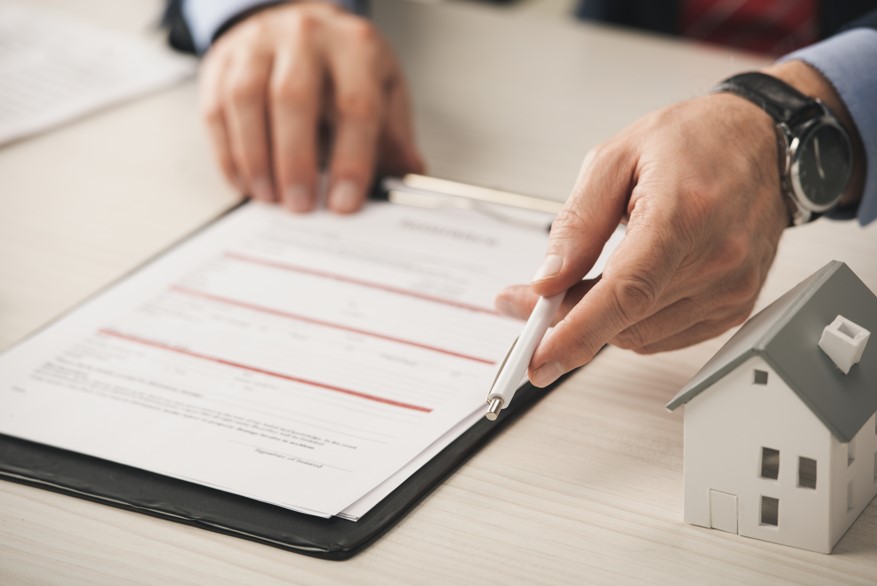
Buying a house is one of the biggest financial steps you’ll ever take. Whether you’re a first-time buyer or looking to upgrade, here’s a quick snapshot of what you’ll need to do:
- Assess your financial health: Check your credit score, debt-to-income ratio, and monthly expenses.
- Plan your down payment and closing costs: Know what you’ll need upfront and at closing.
- Find the right mortgage: Explore options like conventional, FHA, VA, and USDA loans.
- Get preapproved: Secure a preapproval letter to understand your budget.
- Start searching for homes: Use online tools, in-person visits, and open houses.
- Make an offer and sign a contract: Negotiate terms and open an escrow account.
- Schedule inspections and appraisals: Make sure the home is in good shape and valued correctly.
- Close the sale: Pay closing costs, sign paperwork, and get the keys to your new home.
Buying a house is not just a transaction; it’s a major investment that requires careful planning and guidance. By working with knowledgeable professionals like real estate agents, lenders, and attorneys, you can navigate the complexities with confidence and ease. From securing your financing to finding the perfect home, each step is crucial to ensure you make a wise and informed decision.
I’m Scott Beloian, broker/owner of Westcoe Realtors with a deep understanding of Inland Empire real estate. With years of experience helping clients with buying a house, I’m committed to making your home-buying journey smooth and personalized.
Let’s dive into the first step of this exciting process.

Assess Your Financial Health
Before you start dreaming about your new home, it’s crucial to get a clear picture of your financial health. This will help you understand what you can afford and make the buying process smoother. Here’s how to assess your financial health:
Check Your Credit Score
Your credit score is like a report card for your financial life. It tells lenders how risky it is to lend you money. A higher score can get you better loan terms and lower interest rates.
You can check your credit score through major credit reporting agencies like Equifax, Experian, and TransUnion. By law, you’re entitled to one free credit report from each of these agencies every year. Visit AnnualCreditReport.com to get your free report.
Tips to improve your credit score:
- Pay your bills on time.
- Keep your credit card balances low.
- Avoid opening new credit accounts right before applying for a mortgage.
Calculate Your Debt-to-Income Ratio
Your Debt-to-Income (DTI) ratio is another key factor lenders consider. It shows how much of your monthly income goes toward paying debts.
To calculate your DTI:
- Add up all your monthly debts (like credit card payments, car loans, student loans).
- Divide this number by your gross monthly income (your income before taxes).
- Multiply the result by 100 to get a percentage.
For example, if your monthly debts are $2,000 and your gross monthly income is $6,000, your DTI is 33% ($2,000 ÷ $6,000 × 100).
Most lenders prefer a DTI of 43% or less. A lower DTI means you’re more likely to get approved for a mortgage.
Determine How Much House You Can Afford
Knowing how much house you can afford is essential before you start looking. Use an affordability calculator to get a rough estimate. These calculators consider your income, debts, expenses, and potential mortgage payments.
Here’s what you’ll need:
- Your monthly income
- Your monthly debts
- Your expected down payment
- Your credit score
A good rule of thumb is the 28/36 rule:
- 28% of your gross monthly income should go toward housing costs (including mortgage, property taxes, and insurance).
- 36% of your gross monthly income should cover all your debts, including your mortgage.
For example, if your gross monthly income is $6,000, you should aim to spend no more than $1,680 on housing costs and $2,160 on total debts.
Assessing your financial health is the first step in making informed decisions about buying a house. Next, we’ll dive into planning your down payment and closing costs.
Plan Your Down Payment and Closing Costs
When buying a house, planning your down payment and closing costs is crucial. These costs can add up quickly, so it’s important to budget wisely. Let’s break down what you need to know.
Down Payment
The down payment is a large, one-time payment you make toward the purchase of your home. Many people think you need 20% down, but that’s not always true.
- Conventional Loans: Typically require a 20% down payment to avoid private mortgage insurance (PMI). However, you can often put down as little as 3%–5%.
- FHA Loans: These government-backed loans require as little as 3.5% down, making them a popular choice for first-time buyers.
- VA Loans: Available to veterans and active-duty military, these loans often require no down payment at all.
- USDA Loans: Designed for rural areas, USDA loans also offer 0% down payment options.
For example, if you’re buying a home for $200,000, a 20% down payment would be $40,000. But with an FHA loan, you might only need $7,000.
Closing Costs
Closing costs are fees you pay to finalize your mortgage. These can range from 3% to 6% of the loan amount. Here’s a breakdown of common closing costs:
- Appraisal Fees: Typically $300–$500, this fee pays for a professional to assess the home’s value.
- Home Inspection Fees: Usually $300–$500, this ensures the home is in good condition.
- Loan Fees: These include origination fees and underwriting fees, often 0.5%–1% of the loan amount.
- Title Fees: Cover the cost of a title search and title insurance to protect against disputes over ownership.
- Property Taxes: Depending on the local tax rate, this can vary widely.
- HOA Fees: If the home is in a community with a homeowners association, you might have to pay monthly or annual fees.
For instance, if you’re borrowing $200,000, your closing costs might range from $6,000 to $12,000.
Budgeting for these costs is essential. Start by saving early and consider all potential expenses. You might also look into down payment assistance programs available in your state.
Planning your down payment and closing costs can seem daunting, but breaking it down into manageable steps makes it easier. Next, we’ll explore how to find the right mortgage for you.
Find the Right Mortgage for You
Choosing the right mortgage is a critical step in the home buying process. Your mortgage type will impact your monthly payments, interest rates, and overall costs. Here are the main types of mortgages to consider:
Conventional Mortgages
Conventional mortgages are loans not backed by the federal government. They are offered by private mortgage lenders like banks and credit unions.
- Pros: They often have lower interest rates and more flexible terms.
- Cons: They usually require a higher credit score and a larger down payment (typically 20%).
These loans are ideal if you have a good credit score and can afford a substantial down payment.
FHA Loans
FHA loans are backed by the Federal Housing Administration. They are designed to help lower-income and first-time buyers.
- Pros: Lower credit score requirements and down payments as low as 3.5%.
- Cons: You will need to pay mortgage insurance premiums (MIP).
FHA loans are a good option if your credit score is lower or if you have a higher debt-to-income (DTI) ratio.
VA Loans
VA loans are provided by the U.S. Department of Veterans Affairs and are available to service members, veterans, and eligible surviving spouses.
- Pros: No down payment required and lenient credit requirements.
- Cons: You must pay a funding fee, which can be financed into the loan.
These loans are an excellent choice for those who qualify, offering significant benefits like zero down payment.
USDA Loans
USDA loans are designed to help low-to-moderate income families purchase homes in rural areas. They are backed by the U.S. Department of Agriculture.
- Pros: Zero down payment and lower mortgage insurance costs.
- Cons: The property must be in a USDA-eligible rural area, and there are income limits.
If you’re buying a home in a rural area and meet the income requirements, USDA loans can be a fantastic option.
Choosing the right mortgage depends on your financial situation, credit score, and the type of property you are looking to buy. Understanding these options can help you make an informed decision.
Next, we’ll discuss how to get preapproved for a mortgage.
Get Preapproved for a Mortgage
Getting preapproved for a mortgage is a crucial step in the home-buying process. It not only helps you understand your budget but also makes you stand out to sellers and accelerates the process once you find your dream home.
Documents Needed for Preapproval
To get preapproved for a mortgage, you’ll need to gather several important documents. Here’s what you should have ready:
- Tax Returns: Lenders will want to see your tax returns from the past two years. This helps them verify your income and understand your financial stability.
- Pay Stubs: If you’re employed, provide your most recent pay stubs. These show your current earnings and help confirm your employment status.
- W-2 Forms: These forms summarize your yearly earnings and are crucial for verifying your income.
- Other Income Records: If you have additional sources of income (like rental income or investments), you’ll need to provide documentation for these as well.
- Down Payment Evidence: Show proof of funds for your down payment. This can be in the form of bank statements or investment accounts.
- Identification Documents: A government-issued ID, like a driver’s license or passport, is required to verify your identity.
- Bank Statements: Provide your bank statements from the past few months. These help lenders assess your financial health and ensure you have enough funds for the down payment and closing costs.
Why Get Preapproved?
- Understand Your Budget: A preapproval letter gives you a clear idea of how much you can afford to spend on a home. It takes into account your income, assets, debts, and credit score.
- Stand Out to Sellers: Buyers holding preapproval letters are often given preference by sellers. It shows that you’re serious and financially prepared to make the purchase.
- Accelerate the Process: With a preapproval letter in hand, you can expedite the mortgage application process when you find the perfect home. This can help you move quickly in this competitive housing market.
Getting preapproved for a mortgage involves a comprehensive review of your financial situation. By preparing these documents in advance, you can make the process smoother and increase your chances of getting approved.
Next, we’ll dive into how to start your home search.
Start Your Home Search
Online Listings
The internet is a great place to start your home search. Websites like Houzeo, Redfin, and Zillow offer extensive listings with photos, detailed descriptions, and virtual tours. These platforms allow you to filter homes by price, size, location, and other criteria to match your preferences.
Tips for Using Online Listings:
- Set Up Alerts: Most websites let you set up email alerts for new listings that meet your criteria.
- Use Filters: Narrow down your search using filters for price range, number of bedrooms, and other important features.
- Read Reviews: Check out reviews or comments about the neighborhood and the property itself.

In-Person Showings
While online listings are convenient, nothing beats seeing a home in person. Schedule showings with your real estate agent to explore potential homes. This is your chance to get a feel for the house and the neighborhood.
Why In-Person Showings are Important:
- Get a Real Feel: Photos can be deceiving. Walking through a home gives you a better sense of space and layout.
- Explore Neighborhoods: Take the time to drive around the neighborhood to see if it meets your needs.
- Ask Questions: Use this opportunity to ask the seller’s agent any questions about the property.
Open Houses
Open houses are another excellent way to see homes without the need for a prior appointment. They offer a relaxed environment where you can explore the property at your own pace.
Benefits of Attending Open Houses:
- Compare Multiple Homes: Open houses often occur on weekends, allowing you to visit several homes in one day.
- Meet the Agent: This is a chance to meet the listing agent and ask detailed questions about the property.
- Neighborhood Exploration: Use this time to explore the surrounding area and amenities.
By combining online listings, in-person showings, and open houses, you can get a comprehensive view of what’s available in the market. This multi-faceted approach helps you make an informed decision when you’re ready to make an offer.
Next, we’ll discuss how to make an offer and sign a contract.
Make an Offer and Sign a Contract
Once you’ve found the perfect home, it’s time to make an offer. This step is crucial and can be a bit nerve-wracking, but with the right guidance, you can navigate it smoothly.
Negotiating the Offer
- Offer Price: Your real estate agent will help you determine a fair offer price based on market conditions and comparable home sales. The listing price is just a starting point.
- Preapproval Letter: Include a preapproval letter with your offer. This shows the seller you’re serious and financially ready to buy. It can make your offer more attractive compared to others who might not have this.
- Proof of Funds: If you’re making a cash offer or putting down a large down payment, include proof of funds. This reassures the seller that you have the financial means to complete the purchase.
- Contingencies: These are conditions that must be met for the sale to go through. Common contingencies include:
- Home inspection
- Appraisal
- Financing
- Sale of your current home
- Counteroffers: The seller might not accept your initial offer. They may come back with a counteroffer. This could involve changes to the price, closing date, or contingencies. Be prepared to negotiate back and forth until you reach an agreement.
- Acceptance or Rejection: The seller can accept, reject, or counter your offer. If they accept, congratulations! If they reject or counter, you can choose to negotiate further or move on to another property.
Opening an Escrow Account
Once you and the seller agree on the terms, you’ll open an escrow account. This neutral third party holds funds and documents until all conditions of the sale are met.
- Escrow Deposit: You’ll need to make an escrow deposit, also known as earnest money. This is typically 1% to 2% of the purchase price. It shows the seller you’re committed to buying the home.
- Escrow Instructions: Both you and the seller will provide instructions to the escrow company. These instructions outline the terms and conditions of the sale, including contingencies and deadlines.
- Escrow Process: During escrow, several steps occur:
- Home inspection
- Appraisal
- Finalizing your mortgage
- Addressing any contingencies
- Closing Escrow: Once all conditions are met, funds are transferred, and documents are signed, the escrow closes. You’ll receive the keys to your new home and officially become a homeowner.
Negotiating the offer and opening an escrow account are critical steps in the home buying process. They require careful attention to detail and effective communication with your real estate agent and the seller. Next, we’ll dive into scheduling a home inspection and appraisal.
Schedule a Home Inspection and Appraisal
Home Inspection
A home inspection is a crucial step when buying a house. It helps you understand the condition of the property and identify any potential issues.
What Happens During a Home Inspection?
An Illinois licensed inspector will examine the home’s structure, roof, electrical systems, plumbing, and more. They will look for:
- Structural issues: Cracks in the foundation, sagging roofs, and other signs of damage.
- Mechanical issues: Faulty HVAC systems, plumbing leaks, and electrical problems.
After the inspection, you’ll receive a detailed report outlining any problems. This report is your tool for negotiating repairs or asking for credits from the seller.
Why Is It Important?
The inspection can uncover hidden problems that could cost you a lot of money down the line. For example, discovering mold or poorly installed windows during an inspection can save you from future headaches and expenses.
Home Appraisal
A home appraisal determines the current market value of the property. This is particularly important if you are getting a mortgage.
What Happens During a Home Appraisal?
A lender-hired appraiser will visit the property and evaluate its condition, size, location, and features. They will compare it to similar homes recently sold in the area. The appraiser will then provide a report with the appraised value.
Why Is It Important?
Lenders require an appraisal to ensure they are not lending more money than the home is worth. If the appraisal comes in lower than the purchase price, you may need to renegotiate with the seller, increase your down payment, or even walk away from the deal.
Key Points to Remember:
- Inspection: Focuses on finding potential problems in the home.
- Appraisal: Determines the market value of the home.
Scheduling a home inspection and appraisal are vital steps in the home buying process. They provide you with essential information about the property’s condition and value, helping you make informed decisions and negotiate effectively.
Ask for Repairs or Credits
After the home inspection, you might find issues that need fixing. This is where negotiation leverage comes into play. You can ask the seller to make repairs or offer credits to cover the cost of these repairs.
Repairs
Repairs are specific fixes you want the seller to handle before you move in. Common repair requests might include:
- Electrical problems: Like faulty wiring or outdated systems.
- Plumbing issues: Leaks, slow drains, or broken fixtures.
- Roof damage: Missing shingles or leaks.
- Structural problems: Cracks in the foundation or walls.
Example: A buyer’s inspection report might show that the roof needs repairs. The buyer can ask the seller to fix the roof before closing the sale.
Credits
Credits are an alternative to repairs. Instead of fixing the issues, the seller gives you money to cover the costs. This money is often applied to your closing costs.
Example: If the inspection reveals the HVAC system is old and might need replacing soon, the seller might offer a credit to help cover the future replacement cost.
Negotiation Leverage
Using the inspection report as negotiation leverage can help you get the best deal. Here’s how:
- Document Everything: Use the inspection report to list all issues.
- Be Reasonable: Focus on significant issues, not minor cosmetic flaws.
- Prioritize: Decide what’s most important to you—repairs or credits.
- Communicate Clearly: Let your real estate agent handle negotiations with the seller.
Case Study: A buyer found mold in the basement during an inspection. They used this information to negotiate a $5,000 credit from the seller, which was then used to cover part of the closing costs.
The seller doesn’t have to agree to your requests. But in most cases, both parties want the sale to go through, so they’ll likely find a middle ground.
Next, we’ll discuss how to close the sale, covering the final steps and paperwork needed to get the keys to your new home.
Close the Sale
Closing Disclosure
Three business days before your closing date, your lender will provide you with a Closing Disclosure. This document is crucial because it outlines all the details of your mortgage. It includes:
- Mortgage details: Type of mortgage, loan term, and interest rate.
- Monthly payment: Breakdown of your principal, interest, taxes, and insurance.
- Origination fees: Costs associated with processing your loan.
- Closing costs: Total amount you need to pay at closing.
Make sure to compare this with your initial Loan Estimate to ensure there are no unexpected changes. If you find discrepancies, contact your lender immediately for clarification.
Final Settlement
The final settlement is the day you officially become a homeowner. Here’s what you need to know:
1. Paperwork: During the closing meeting, you will sign several important documents. These include the settlement statement, mortgage note, and deed of trust.
2. Home Keys: Once all documents are signed and funds are transferred, you will receive the keys to your new home. This is the moment you’ve been waiting for!
3. Escrow Transfer: The escrow agent will handle the transfer of funds. This includes your wired closing costs and down payment. The agent ensures all lender requirements are met before disbursing the loan proceeds to the seller.
4. Final Checks: Make sure to bring your ID, a copy of your Closing Disclosure, and proof of funds for your closing costs. Double-check that everything is in order to avoid any last-minute hiccups.
By understanding these final steps, you can confidently move toward closing the sale and starting your new life as a homeowner.
Frequently Asked Questions about Buying a House
What is the first thing to do to buy a house?
The first step in buying a house is to assess your financial health. This involves checking your credit score, calculating your debt-to-income (DTI) ratio, and determining how much house you can afford.
Credit Score: Your credit score affects the interest rates you can get. Check your score through Equifax, Experian, or TransUnion. A good score can save you thousands over the life of your loan.
DTI Ratio: Calculate your DTI by dividing your monthly debts by your gross monthly income. Aim for a DTI of 36% or lower to qualify for most mortgages.
Affordability: Use a home affordability calculator to estimate what you can afford. Consider your income, debts, and other expenses.
Next, get preapproved for a mortgage. This shows sellers you are serious and helps you understand your budget. Gather necessary documents like tax returns, pay stubs, and bank statements for this step.
Finally, hire a real estate agent. They can guide you through the process, from finding the right home to negotiating the best deal. Agents have access to the Multiple Listings Service (MLS) and can provide valuable insights.
How much money do I need to comfortably buy a house?
To comfortably buy a house, you should budget for more than just the down payment. Here’s a breakdown:
Down Payment: Most mortgages require a down payment. A 20% down payment is typical, but some loans allow for less. For example, FHA loans require as little as 3.5%.
Monthly Mortgage Payments: Follow the 28/36 rule. Your monthly mortgage should not exceed 28% of your gross monthly income, and your total debt payments should not exceed 36%. For example, if your pre-tax income is $5,000 per month, aim for a mortgage payment of no more than $1,400.
Additional Costs: Don’t forget closing costs, which can range from 2% to 5% of the home’s purchase price. Also, budget for home upkeep, homeowner’s insurance, and property taxes.
Cash Reserves: Lenders often require you to have cash reserves equal to at least two months of mortgage payments. This acts as a safety net.
What are the requirements to purchase a home in Illinois?
Buying a home in Illinois comes with specific requirements:
Credit Score: Most lenders require a credit score of at least 620 for conventional loans. FHA loans may accept scores as low as 580, but higher scores get better rates.
Income Limits: Some loan programs have income limits. For example, USDA loans are for low to moderate-income buyers in rural areas.
Primary Residence: Many loans, such as FHA and VA loans, require the home to be your primary residence.
Homeownership Counseling: Programs like FHA loans often require you to complete a homeownership counseling course. This helps you understand the responsibilities of owning a home.
By knowing these requirements, you can better prepare for the home-buying process and avoid surprises.
Next, we’ll dive deeper into the steps to closing the sale and what you can expect on the big day.
Conclusion
Buying a house is a significant milestone, and having the right team by your side can make all the difference. At Westcoe Realtors, we pride ourselves on offering personalized, human-centered service. We take the time to understand your unique needs, goals, and concerns. Our commitment is not just to help you find a property, but to help you find the right property for you.
With over 60 years of experience in the Riverside market, we bring unparalleled local knowledge. We know the neighborhoods, market trends, and hidden gems that make Riverside a fantastic place to invest. Our deep community ties allow us to offer insights that go beyond what’s listed online.
From the initial search to closing the deal, we’re with you every step of the way. Our team provides comprehensive support through each phase, simplifying complex processes and making your real estate journey as smooth as possible.
Moreover, we are deeply committed to the Riverside community. Our involvement in programs like the First Time Home Buyer Program and Low Income Housing initiatives reflects our dedication to building strong, sustainable communities. We strive to make housing accessible and affordable for all.
When you choose Westcoe Realtors, you’re not just getting expert guidance; you’re joining a community that values human interaction and local ownership.
Ready to take the next step in your home-buying journey? Discover the Westcoe Realtors difference. Let’s make your real estate dreams a reality in the vibrant and dynamic Inland Empire.
Your home, your future, our commitment.







